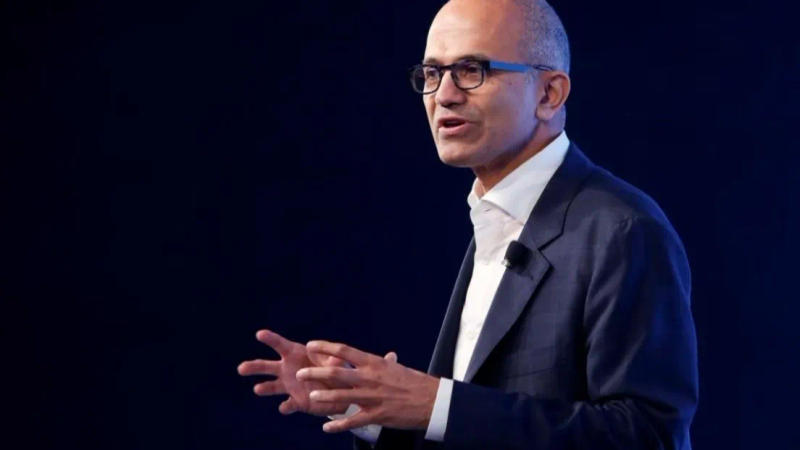Published 13:03 IST, December 23rd 2024
Microsoft’s AI Setback: An Imaginary Letter
Breakingviews imagines the letter that Microsoft Chief Executive Satya Nadella might write to shareholders after the artificial intelligence bubble deflates.

Software and tear. Breakingviews imagines the letter that Microsoft Chief Executive Satya Nadella might write to shareholders after the artificial intelligence bubble deflates.
Dear shareholders, colleagues, customers and partners:
This is a painful letter for me to write. Artificial intelligence has been a generational opportunity for Microsoft, and it remains one. To ensure that our next 50 years are as successful and influential as the first 50, we decided to deploy capital, quickly and in large quantities, on a technology that is already reshaping how people work and play. Although our company will keep capitalizing on AI and reinventing itself to do so, recent developments have prompted us to reassess the quantum and pace at which we pursue these initiatives. They also have forced us to revisit the value of our existing investments.
Although Microsoft is confident about the prospects for generative AI, we cannot ignore some of the emerging realities. The seemingly boundless improvements from adding data and computing power have slowed considerably. Instead of just getting bigger, the industry will have to get smarter about training models. In the meantime, our customers are catching their breath, analyzing the technology’s genuine productivity benefits and trying to balance it with the pressure to rein in costs. A handful of unfortunate cases in which a chatbot “hallucinated” while advising emergency medical teams have undermined public faith in machine learning. Competition is also on the rise, while regulators are intensifying efforts to prevent unrestrained growth in artificial intelligence.

Some early AI deals also have not paid the expected dividends. ChatGPT maker OpenAI, for example, blazed a trail with the help of our $13 billion investment. Its attempts to change from a not-for-profit entity into something resembling a conventional company have proved tricky, however. Antitrust authorities have thwarted our attempts to exert influence commensurate with our financial contribution, as has OpenAI co-founder Sam Altman. This matter is now in the hands of our legal advisers, and we are frustrated to be seeing him in court.
These developments clearly are a setback, but they should not detract from our achievements. From Air India to Zurich, thousands of customers have improved and streamlined their operations by using Azure’s cloud-computing generative AI capabilities and Microsoft 365 Copilot. In just two years, these services were on track to generate more than $10 billion of annual revenue for us, the fastest business to reach the milestone in company history. Such growth helps justify our aggressive push to become an early leader.
We are also conscious, however, of the need to earn a healthy return on investment from the substantial outlays. Our capital expenditure in the six quarters through September 2024 was $43 billion more than in the previous six. As this category expands to account for 30% of revenue from 14%, it has been interpreted to mean that some $36 billion went to AI. Our friends on Wall Street last year were expecting Microsoft to devote some $90 billion to capex by the end of our June 2026 financial year, according to Visible Alpha, triple the amount from five years earlier. And close inspection of our income statement would lead to the reasonable inference that some operating expenses have been reallocated to AI, too.

Profitability at the onset was bound to be lower than what shareholders expect from Microsoft. The venture capital firm Andreessen Horowitz found that the gross margin in AI companies was consistently around 50% to 60%, below the usual 60% to 80% in subscription-based software. Even though we don’t break out the figures, some observers have surmised that our AI business earns an operating margin of about 25%. Using those assumptions, $2.5 billion of profit on roughly $50 billion of investment implies an initial return of just 5%.
Microsoft must adapt accordingly to these market forces. As Amy Hood, our chief financial officer, has said, “We will stay aligned and, if needed, adjust to the demand signals we see.” To that end, we are examining our budgets with the intention of recalibrating how much money we allocate to building new data centers and the substantial amounts of energy used to power them. Some of our long-term energy contracts are therefore superfluous. We are negotiating with Pennsylvania authorities about offloading power from the soon-to-be-restarted nuclear reactor on Three Mile Island. A steady supply of cheap electricity will benefit the state’s citizens, but it will force us to recognize a substantial loss.
With every new technology comes a certain degree of exuberance and hype. This time around, our company participated in it, and probably even contributed to it. We continue to believe it was for good reason. Previous technological advancements, from railways in Victorian England to the arrival of the internet in the 1990s, have delivered lasting rewards for society. We believe that AI will join them in benefitting people across the planet. For now, Microsoft shareholders are not among them, and for that I am very sorry.
Satya Nadella
Updated 13:03 IST, December 23rd 2024
